A Holistic Sanitation Solution: Towards an Equitable Future
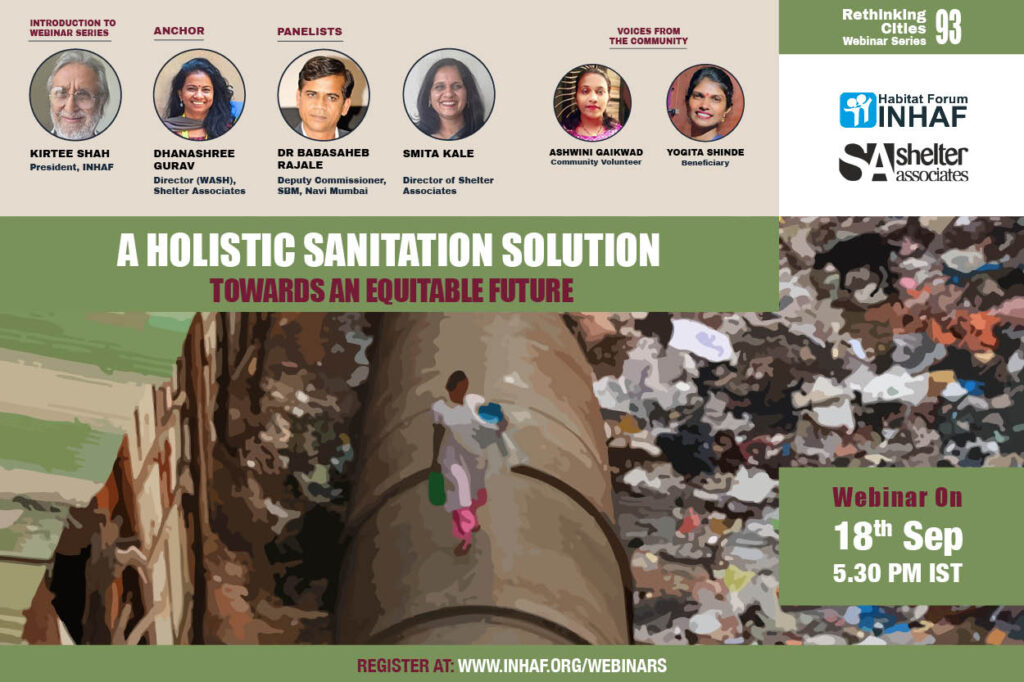
The need for building resilient and equitable cities has become even more crucial with 50% of India’s population projected to reside in urban areas by 2050. With the rapid growth of cities, the distribution of resources including basic necessities such as safe sanitation facilities has been inequitable. The impact of these differences is felt mainly […]
Urban Governance in Karnataka
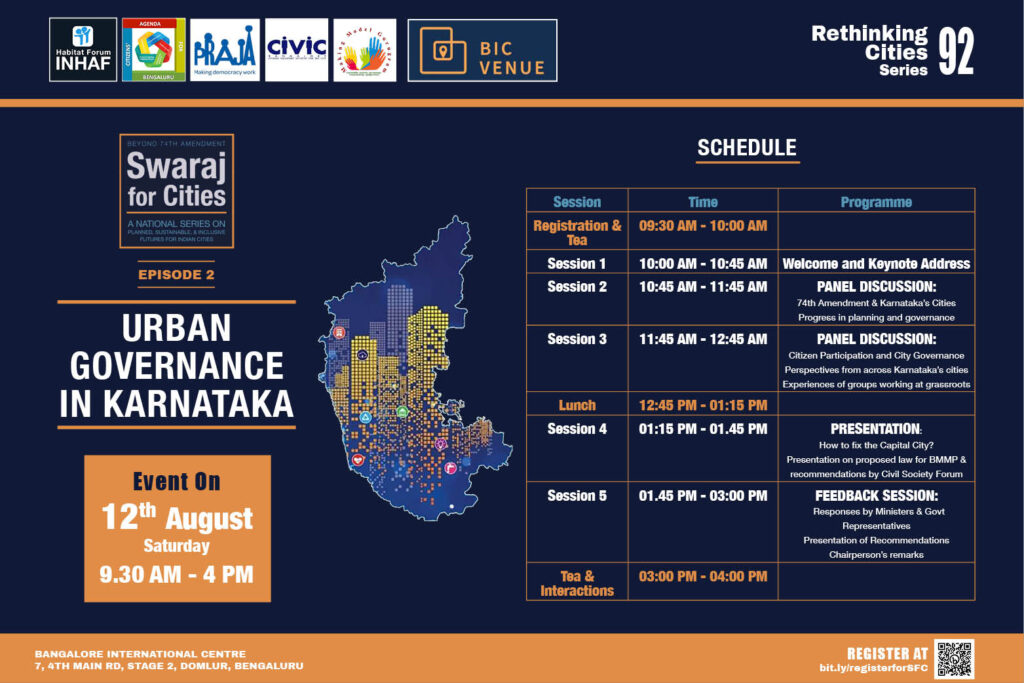
In this edition of Swaraj for Cities, we hold the lens on the state of Karnataka, for the progress it has made in its urban centres, in terms of decentralisation, devolution and subsidiarity. How far has this otherwise progressive state travelled in realising the ideal of Swaraj? How is the Capital City faring, how are […]
Annapurna Pariwar’s Support Services: Childcare and Education for Migrant Women and their Families
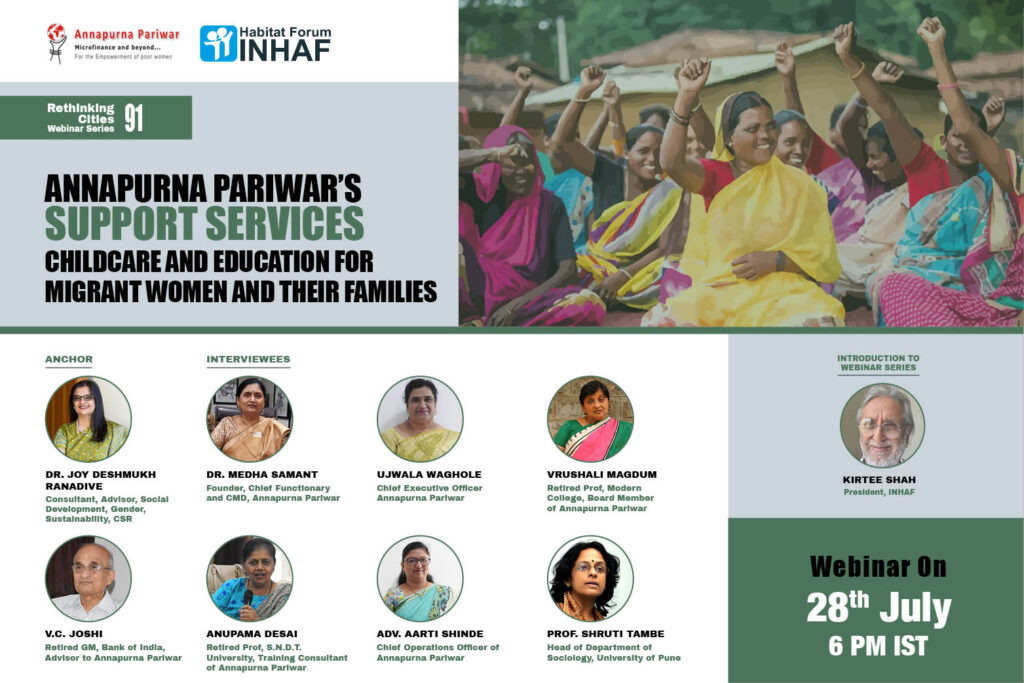
Impact through Empowerment is a series of three webinars that showcases the work of Annapurna Pariwar, a group of six developmental organisations devoted to empowering poor women in the slums of Pune and Mumbai. The goal of Annapurna Pariwar is to improve the quality of life of poor working women & their families. Annapurna Pariwar […]
Urban Planning & Governance – Beyond the 74th Amendment
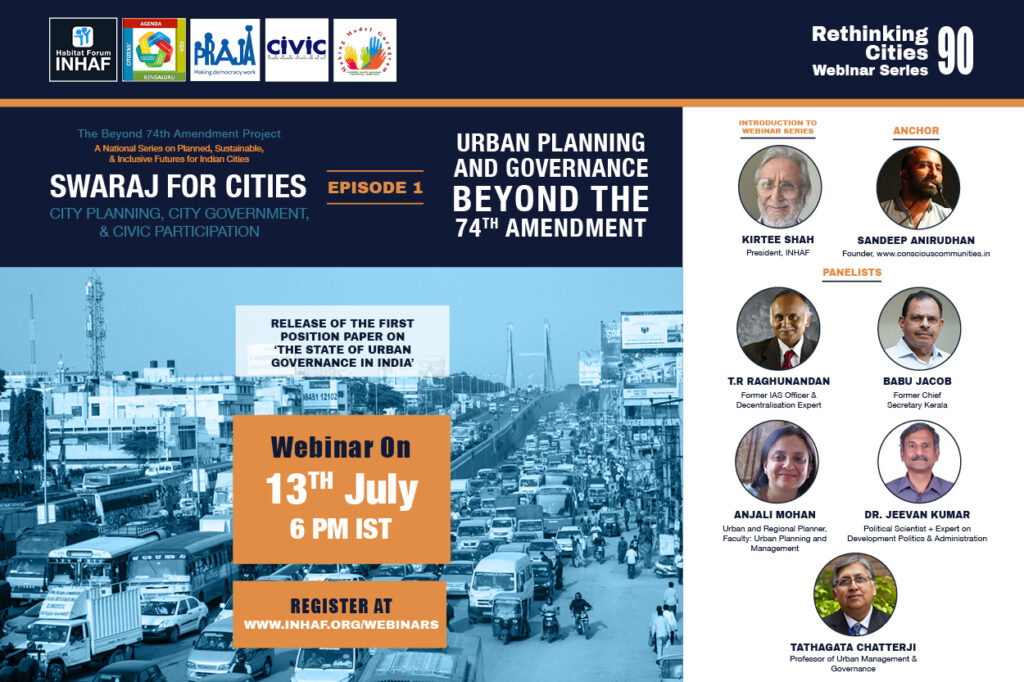
SWARAJ for Cities is a nationwide initiative to help shape ‘Self Governance of Cities’. It is a year-long series of webinars, hybrid conferences, and publications that will focus on the Urban Challenge that India faces, that of Planned and Orderly Growth, and better governance of our cities, towns and peri-urban areas; that is, the fulfilment […]
Decoding Cities and the Union Budget 2023-24
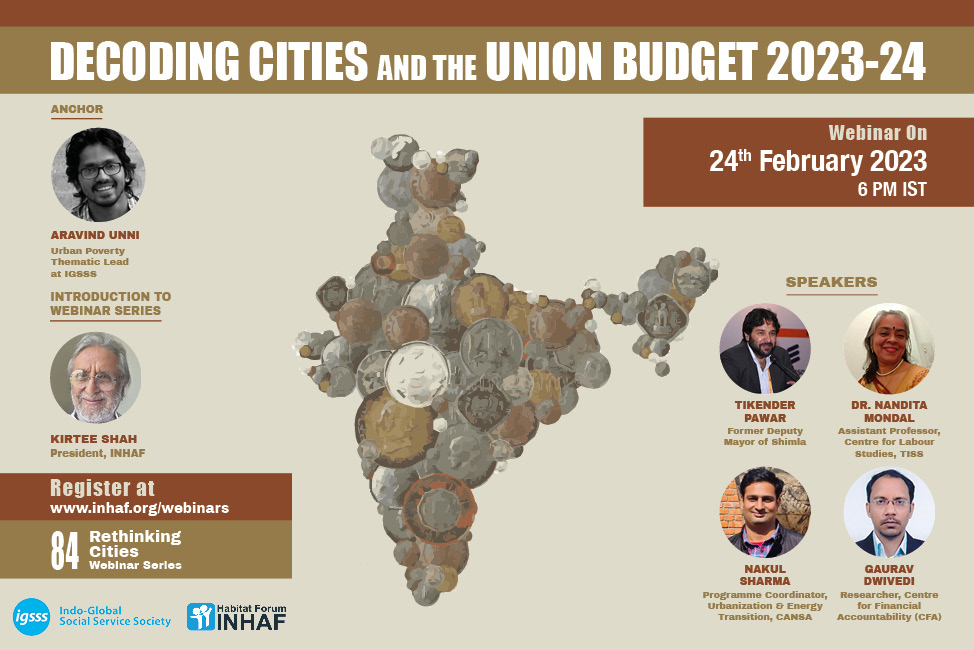
India’s urban trajectory is at an interesting juncture. Whilst awaiting more planned development, Indian cities are also faced with developmental challenges that are unique ranging from sustainability concerns to climate crisis induced hardships that are increasingly visible. The challenges primarily can be categorized as those that are related to poverty and economic inequalities, infrastructural shortfall […]
What would a Gandhian city look like?
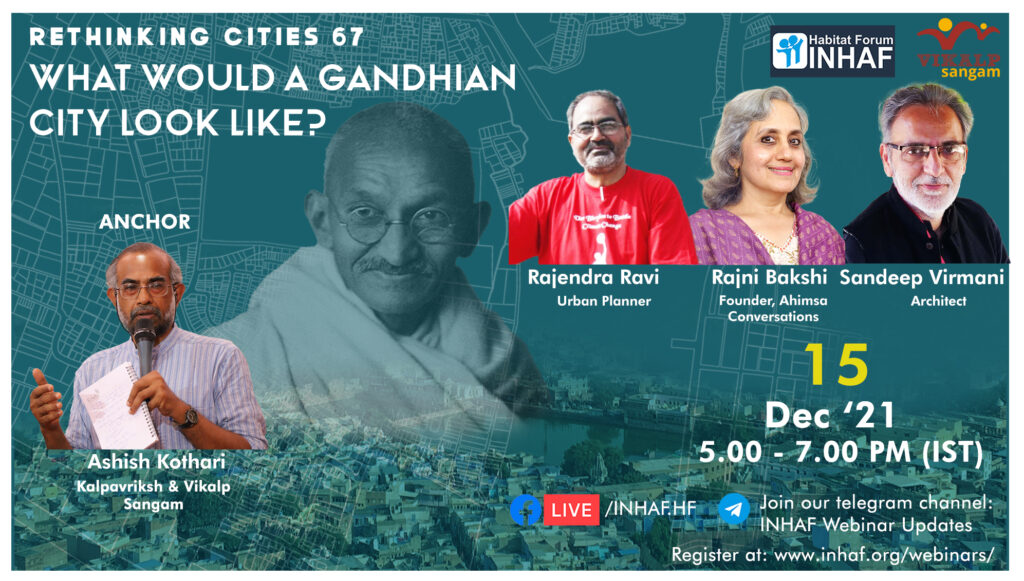
While there has been lots of discussion and action on the possibilities, strengths and limitations of a Gandhian approach to rural areas, there has been very little in relation to cities. What would the concepts of swaraj, sarvodaya, satyagraha, and ahimsa mean for urban life, planning, politics, and society? Is it possible to conceive of […]
Supporting and strengthening civil society in addressing the urban challenge: How can CSR/philanthropy help?
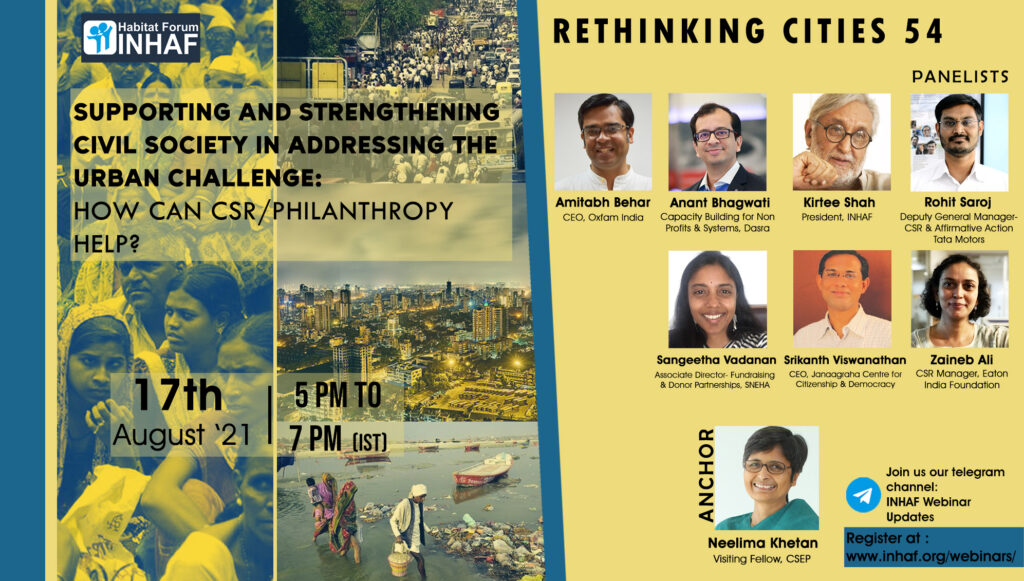
India is in the throes of rapid urbanisation. The proportion of urban population increased from 17.3% in 1951 to 31.8% in 2011. The urban population of 377 million in 2011 is projected to almost double to 820 million in 2050. On the one hand, urbanisation seems to hold great promise. By 2030, 70% of net […]
